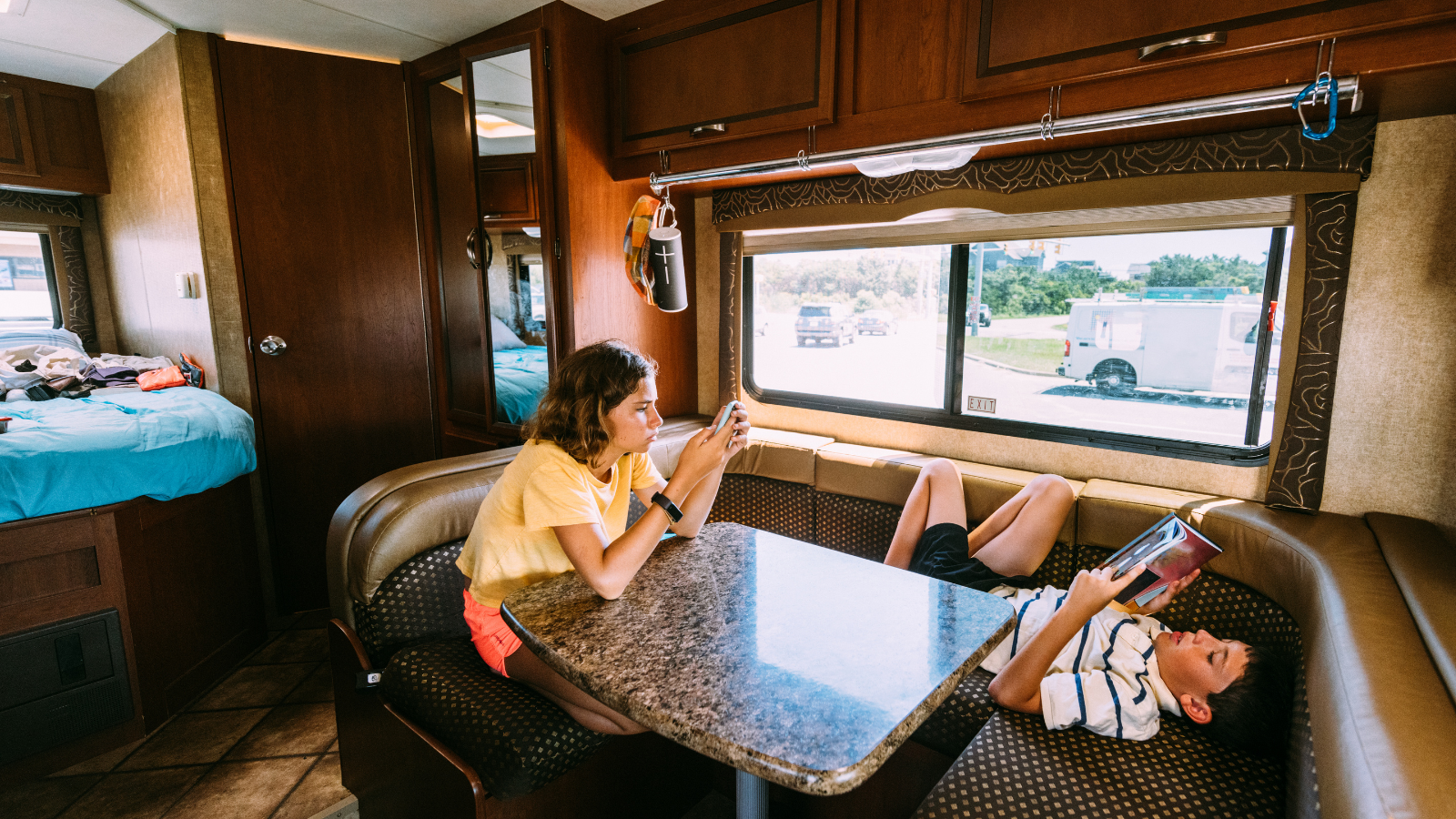One of the beautiful things about an RV is that you can use it throughout the year. Yes, even in winter, if you make appropriate plans. You may choose to get your RV out of storage early (if you haven’t already been using it for winter camping) and use it to travel to a warmer destination for spring break this year.
Follow these preparation tips for a fun, relaxing spring break.
What are the benefits of vacationing in an RV for spring break?
One of the benefits of vacationing in an RV is that packing is much more manageable. Plus, you get to have your favorite items, such as a weighted blanket or a favorite pillow or your favorite morning coffee. You don’t need to lug suitcases in and out of hotels, and you know the only people who have used your bed, linens, and surfaces are you and your family. You can bring your pets along if you want, without worrying about leaving them behind or paying exorbitant fees at the kennel. RVing also gets you closer to nature, which helps rejuvenate the spirit and clears the mind. You also have flexibility to move to different locations more readily, or to adjust your plans – much easier than trying to change an flight! You can also decide to reach more remote locations – and be able to stay there. The best perk, however, is that RV travel, when managed well, is more economical than other forms of travel, especially when it comes to larger groups or families.
Will you need a campground reservation?
Yes! Remember, spring break time is high tourist season for many Southern states. You need to plan in advance as to where you want to stay as many campgrounds, RV parks, and RV resorts are booked in advance. You may still be lucky and find a spot in February or early March, but you’re much better off doing this in the fall of the previous year. If you choose to boondock, research your stops. Make sure to check for weather along the way to help inform your decision of where to stop, and remember, it may be somewhere other than where you planned.
If you RV has been in storage, how soon do you de-winterize it if you’re planning to drive it south?
As soon as you’re in an area where the temperature is above freezing, both at night and in the daytime. You may choose to stop at a campground along the way for the night and take care of it then, or you may wait until you reach your final destination, depending on the length of the drive. It’s up to personal preference, as long as you can do so safely and without the risk of freezing.
Can you stay in the RV on the way to a warmer destination?
This depends on several factors. First, the weather. Check the weather forecast, especially wind speeds (wind chill drops that air temperature very quickly) and precipitation. Be flexible with your departure window. If there is a winter squall in the forecast, you may need to postpone or leave earlier than planned to avoid the weather as best you can. The other primary factors are where you’re planning to drive to and where you plan to stop along the way. If your final destination is 24 hours away, such as driving from Michigan to Florida, you may need to stop for rest. Some RVers choose to drive far enough south to be able to stop and stay at a campground (if the weather cooperates) while others may choose shorter spurts and stay at hotels until they reach their final destination.
What needs to be de-winterized?
You’ll need to get your holding tanks back in order and run fresh water through all the lines. If you added insulation to windows or vents, those will need to be removed and stored. Clean the furnace area for dust, debris, and insects before testing the system and then finally running it. Bring an extra jug of water for drinking and the toilet to get started. Make sure gasoline and propane tank valves are secure and the tanks are full before running anything that uses that source for energy. If you have a motorized RV, then check all fluid levels (top off as needed) and reconnect (and possibly charge) the battery if it was removed. Check tires for inflation levels as well as any wear and tear.

